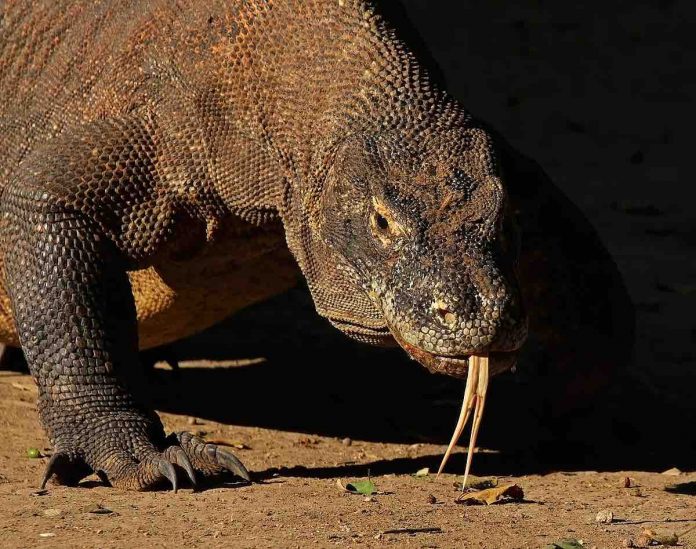Indonesian officials have denied claims that development of a so-called Jurassic Park-style tourist attraction in the country’s protected Komodo National Park would endanger one of the last wild populations of komodo dragons.
Critics and researchers have raised concerns that construction work in Rinca Island, one of three islands that together make up the Komodo National Park that harbours almost 3000 of the world’s largest lizards, will harm the population after recent images showed an animal facing off against a construction vehicle.
Indonesian environmental group WALHI told The Australian the $6.7m project deviated wildly from the government’s earlier intention to promote scientific research of the prehistoric reptiles and were “pure business”.
Local groups have also raised the alarm. “Construction and development in the park area will lead to the damage and degradation of the komodo’s natural habitat,” said Gregorius Afioma, a researcher with East Nusa Tenggara environment and land rights group Sunspirit for Justice and Peace organisation.
A senior environment ministry official, Wiratno, said on Wednesday the development would ultimately protect the animals through the construction of an elevated viewing deck that would keep tourists at a distance, unlike previously where visitors could feed the dragons.
That is despite computer-generated images released by Indonesia’s public works ministry showing a manicured lawn arena in which tourists appear to closely interact with komodo dragons.
“We are working on only 2.5 per cent of the entire (20,000ha) Rinca Island. We will ensure no komodos will fall victim to our work,” Wiratno said.
Komodo dragons, which can grow up to 3m long and weigh as much as 160kg, are believed to have roamed Australasia up to three million years ago before eventually moving westward to eastern Indonesia.
East Nusa Tenggara government spokesman Marius Ardu Jelamu said of 1300 komodos on Rinca, only “about six are around the construction area”.
Both spokesmen insisted the project would be done in a way that safeguarded the komodo population, now listed as vulnerable because of habitat destruction from development and natural disasters.
Mr Afioma said officials were disregarding the damaging impact on the animals’ ecosystem. “There are signposts from the environment ministry saying ‘Keep Silent’, but now they are bringing in trucks and excavators,” he said.
“Komodos may be able to roam freely but the noise will scare them off and also their prey — deer, boars, wild buffaloes and wild horses.”
Rinca Island, a popular international tourist attraction in Indonesia’s eastern Flores, is badly run down and overdue for investment in what should be a world-class national park.
Rinca officially shut down last Monday, with government officials announcing it would be closed for upgrades until June.
Komodo Island is open for now, but a plan announced last year to close it to all but wealthy ecotourists prepared to pay $US1000 to visit has drawn criticism.





























